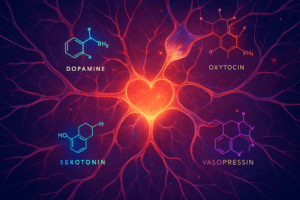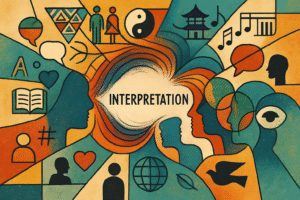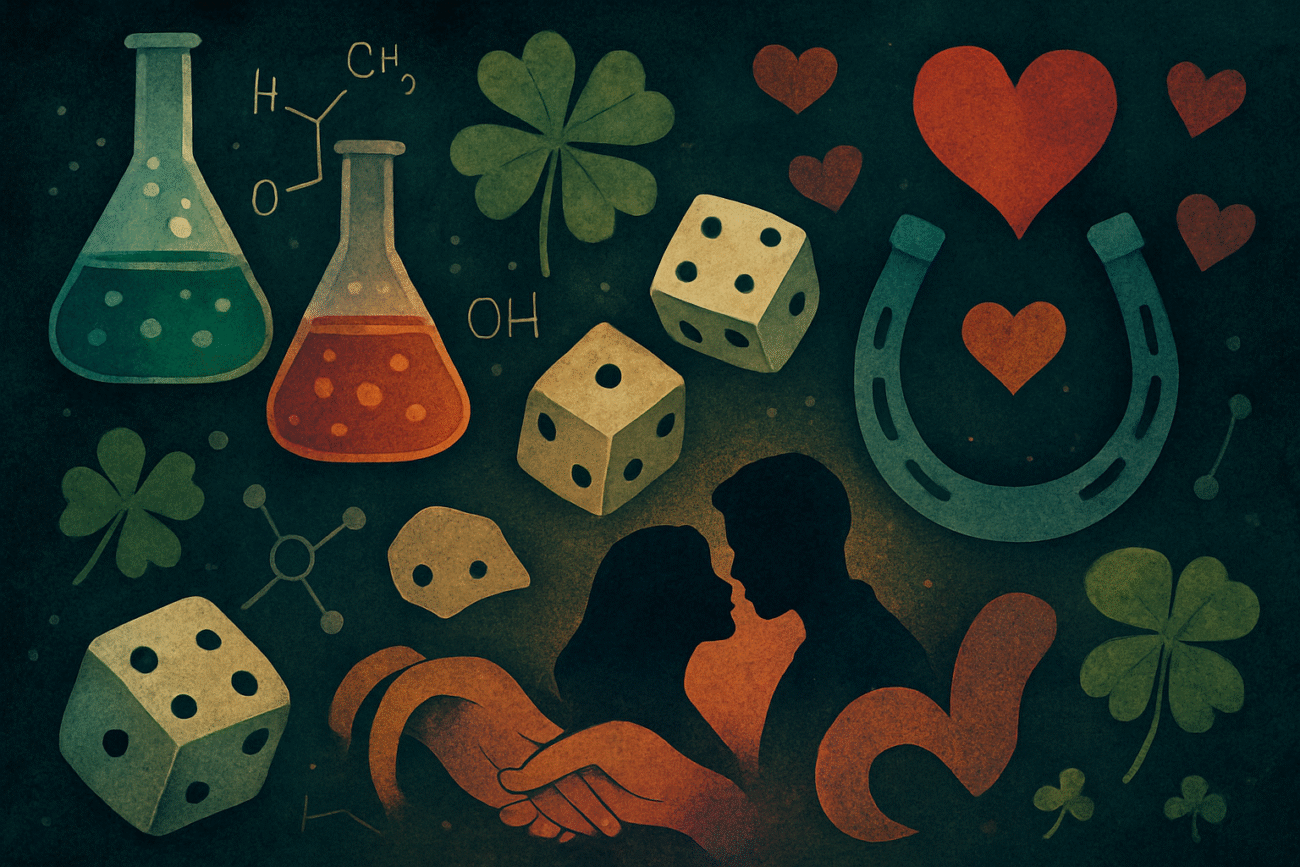Understanding the Intersection of Emotion and Probability
We stand at a fascinating crossroads where neuroscience, psychology, and probability theory converge to illuminate two of humanity’s most enigmatic experiences: love and luck. These seemingly disparate phenomena share remarkable parallels in how they manifest in our lives, influence our decision-making, and shape our perceptions of reality. Through rigorous examination of the biochemical foundations of attraction and the mathematical principles underlying chance events, from the flutter of a first kiss to the spin of a Pirots 4 Demo, we discover that both experiences operate through strikingly similar mechanisms.
The Neurochemical Architecture of Love

When we examine the biological underpinnings of romantic attachment, we find a sophisticated cascade of neurochemical reactions that govern our emotional responses. The brain releases dopamine, oxytocin, and serotonin in precisely calibrated sequences that create the euphoric sensations we associate with falling in love. This neurochemical symphony operates through pathways remarkably similar to those activated during gambling or experiencing unexpected good fortune.
Dopamine, the neurotransmitter most closely associated with reward prediction, floods our neural circuits when we encounter someone attractive or experience a fortunate outcome. This chemical messenger creates a reinforcement loop that encourages us to seek out these experiences repeatedly. The ventral tegmental area and nucleus accumbens—brain regions critical for processing reward—demonstrate identical activation patterns whether we’re gazing at a romantic partner or celebrating an unexpected windfall.
The limbic system, our brain’s emotional processing center, responds to both romantic stimuli and fortunate events with heightened activity in the amygdala and hippocampus. These structures encode emotional memories and create powerful associations between specific circumstances and positive outcomes, whether those outcomes involve interpersonal connection or material gain.
Probability Theory and Pattern Recognition in Human Experience
We humans possess an extraordinary capacity for pattern recognition, a cognitive ability that served our ancestors well when identifying threats and opportunities in their environment. However, this same capability leads us to perceive patterns where none exist, particularly when examining sequences of random events. This phenomenon, known as apophenia, influences how we interpret both romantic encounters and apparently lucky occurrences.
The availability heuristic shapes our understanding of probability in ways that parallel our romantic narratives. We remember vivid examples of couples who met through improbable circumstances or individuals who experienced remarkable strokes of luck, and these memorable instances distort our perception of how common such events actually are. The cognitive machinery that convinces us our chance meeting with a partner was “meant to be” operates identically to the mental processes that lead us to believe we’re on a “lucky streak.”
Randomness itself follows predictable mathematical distributions. The normal distribution, Poisson processes, and other probabilistic frameworks describe how chance events cluster and disperse over time. When we experience a sequence of positive romantic interactions or a series of fortunate coincidences, we often fail to recognize that such clusters occur naturally within random systems without requiring any underlying causal mechanism.
The Role of Confirmation Bias in Love and Fortune
We exhibit pronounced confirmation bias when evaluating both romantic compatibility and personal luck. Once we decide someone might be a suitable partner, we selectively attend to information confirming this hypothesis while discounting contradictory evidence. Similarly, when we believe ourselves to be experiencing good or bad luck, we notice events that reinforce this belief while overlooking neutral or contrary occurrences.
The self-fulfilling prophecy operates powerfully in both domains. Individuals who believe they’re unlucky may unconsciously engage in behaviors that produce negative outcomes, while those convinced they’re experiencing a lucky period often take calculated risks that increase their probability of success. In romantic contexts, people who expect rejection may display defensive behaviors that actually trigger the rejection they feared, while those radiating confidence tend to attract positive responses.
Attributional patterns reveal how we assign causation to events in remarkably parallel ways across love and luck. We tend to attribute positive romantic outcomes to our personal qualities while blaming negative results on external circumstances. The same asymmetry appears in how we explain fortunate and unfortunate events—successes result from our skills and efforts, while failures stem from bad luck or unfair circumstances.
Temporal Dynamics and the Illusion of Control
The human perception of time profoundly influences our experience of both love and chance. We construct retrospective narratives that imbue random sequences with apparent meaning and direction. The story of how two people met becomes polished and refined through repeated telling, with coincidental elements emphasized and mundane details omitted. Similarly, we craft narratives about our lucky or unlucky periods that impose coherence on what may have been essentially random sequences of events.
Control illusions pervade both romantic pursuit and activities involving chance. Research demonstrates that people believe they can influence random outcomes through ritual behaviors, timing, or mental effort. The same psychological mechanisms lead us to believe we can somehow attract the right romantic partner through visualization, positive thinking, or specific behavioral strategies. While intentional action certainly matters in both domains, we consistently overestimate our ability to control fundamentally uncertain outcomes.
The hot hand fallacy from sports psychology applies equally well to romantic pursuits. After several successful dates or positive interactions, individuals often believe they’ve entered a special period where success becomes more likely, despite no actual change in underlying probabilities. This belief can produce beneficial effects through increased confidence, but it also reflects our fundamental misunderstanding of how independent random events actually function.
Social and Cultural Frameworks Shaping Interpretation

We exist within cultural narratives that profoundly shape how we interpret experiences of love and fortune. Western romantic ideology emphasizes the concept of soulmates and destined partnerships, framing chance encounters as cosmically ordained meetings rather than probabilistically inevitable occurrences in densely networked social environments. Similarly, various cultural traditions attribute fortunate events to karma, divine providence, or cosmic alignment rather than acknowledging the role of pure chance.
Superstitious behaviors surrounding both love and luck reveal our deep-seated need to impose order on uncertain situations. Dating rituals, lucky charms carried for important meetings, and elaborate courtship protocols all represent attempts to gain control over inherently unpredictable outcomes. These behaviors persist despite lack of causal efficacy because they provide psychological comfort and a sense of agency in situations where we actually possess limited control.
The narrative fallacy described by probability theorists illuminates how we construct stories about our romantic histories and fortunate occurrences that impose false causation on essentially random sequences. We identify turning points, key decisions, and pivotal moments that supposedly determined outcomes, when in reality, alternative narratives could be constructed with equal plausibility from the same set of facts.
Evolutionary Psychology and Adaptive Function
From an evolutionary perspective, both our romantic impulses and our responses to chance events served adaptive functions for our ancestors. The neurochemical reward system that makes falling in love feel euphoric evolved to promote pair bonding and cooperative child-rearing. Similarly, our heightened emotional responses to fortunate and unfortunate events encouraged learning and risk calibration in ancestral environments.
Risk assessment mechanisms shaped by natural selection influence both mate selection and decision-making under uncertainty. We evolved to overweight potential losses relative to equivalent gains—a phenomenon known as loss aversion—which manifests in both romantic risk-taking and gambling behavior. The fear of rejection parallels the anxiety surrounding potential losses, while the excitement of new romantic possibility mirrors the anticipation of a fortunate outcome.
The optimism bias represents another evolved tendency that influences both domains. Slightly inflated estimates of our romantic prospects and general good fortune may have provided adaptive advantages by encouraging persistence and risk-taking. However, this same bias leads us to systematically underestimate the role of chance in producing both positive and negative outcomes.
Mathematical Models and Predictive Frameworks
We can apply game theory and decision analysis to both romantic pursuit and situations involving chance. The mathematics of optimal stopping—illustrated by the secretary problem—provides insights into when to commit to a romantic partner given uncertainty about future opportunities. Expected value calculations inform decisions about when to pursue romantic possibilities despite uncertain outcomes, paralleling how we evaluate gambling propositions or investment opportunities.
Bayesian reasoning offers a framework for updating our beliefs about romantic compatibility and personal fortune as new evidence emerges. We should ideally adjust our confidence in relationship success based on accumulating information, just as we should recalibrate our assessment of whether we’re experiencing genuine luck or normal variance. However, cognitive biases often prevent us from updating our beliefs appropriately in response to new data.
The regression to the mean phenomenon affects both romantic trajectories and perceived luck. Exceptional first dates or initial romantic encounters often lead to disappointment as subsequent interactions regress toward more typical levels of satisfaction. Similarly, periods of apparently exceptional fortune inevitably give way to more average outcomes, though we often interpret this natural regression as a change in our luck rather than the predictable operation of statistical principles.
Practical Implications and Cognitive Strategies
Understanding the parallels between love and luck empowers us to develop more realistic expectations and healthier approaches to both domains. Recognizing the substantial role of chance in romantic encounters reduces self-blame when relationships don’t develop as hoped and encourages appropriate persistence without unhealthy fixation. Similarly, acknowledging the true nature of probability helps us avoid both excessive risk-taking during apparently lucky periods and undue pessimism during unlucky streaks.
Metacognitive awareness—thinking about our thinking—allows us to recognize when cognitive biases are distorting our perception of romantic prospects or personal fortune. By deliberately seeking disconfirming evidence and considering alternative explanations, we can partially compensate for our natural tendency toward confirmation bias and pattern-seeking in random data.
The development of probabilistic thinking skills enhances decision-making in both romantic and chance-influenced contexts. Understanding concepts like sample size, variance, and expected value enables more rational evaluation of potential partners and better calibration of risk-taking in uncertain situations. We become less susceptible to manipulation by our own emotional responses and more capable of distinguishing genuine opportunities from situations where we’re simply experiencing normal variation in outcomes.
Synthesis: Unified Principles Governing Human Experience
The profound parallels between love and luck reveal fundamental truths about human cognition and emotion. Both experiences engage identical neural circuits, trigger similar cognitive biases, and operate through comparable probabilistic mechanisms despite their superficial differences. The euphoria of new love and the excitement of good fortune both stem from dopamine-driven reward responses. The narratives we construct about destined romantic partnerships mirror the stories we tell about being lucky or unlucky. The cognitive illusions that distort our perception of relationship prospects similarly warp our understanding of chance events.
By recognizing these shared foundations, we gain valuable insights into the architecture of human experience. We are pattern-seeking creatures navigating an uncertain world, equipped with neural mechanisms that served our ancestors well but sometimes mislead us in modern contexts. Both love and luck remind us that we exist at the intersection of agency and chance, capable of influencing outcomes through our choices while remaining subject to forces beyond our control.
This synthesis need not diminish the subjective beauty of romantic love or the genuine joy of fortunate circumstances. Rather, understanding the mechanisms underlying these experiences enriches our appreciation for the complexity of human consciousness and the remarkable ways our brains construct meaning from the probabilistic unfolding of events. We can simultaneously embrace the emotional richness of love and fortune while maintaining intellectual humility about the true causes of our experiences.
The chemistry of chance operates through predictable principles whether manifesting as romantic attraction or apparent luck, revealing that seemingly magical experiences emerge from the lawful operation of neurochemical systems and probabilistic processes. This knowledge empowers us to approach both love and fortune with greater wisdom, realistic optimism, and appreciation for the intricate machinery that generates our most meaningful experiences.
